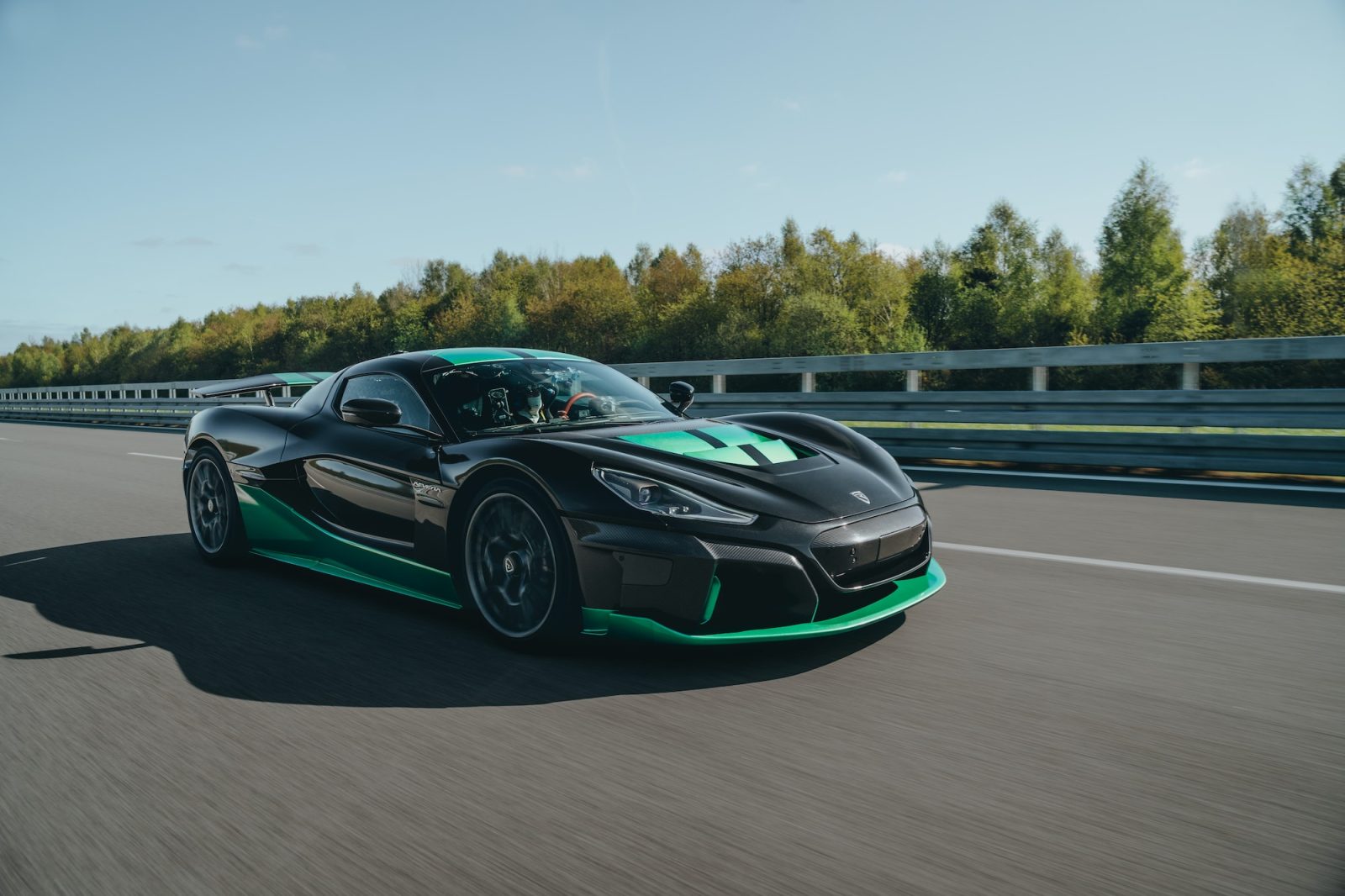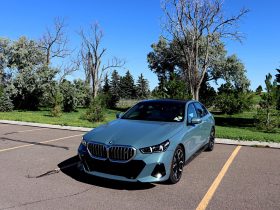Widely regarded as the ultimate test of hypercar straight line performance, the 0-400-0 km/h (0-249-0 mph) record is a test of acceleration, aerodynamics, top speed and stopping power. And now the Nevera is the undisputed hypercar champion, with a new record time of 29.93 seconds – over a second quicker than the previous holder.
On a test track in Germany, the Nevera secured a total of 23 independently verified speed records and – as well as its recent title for fastest top speed of a production electric car – the Nevera now holds the title for most performance records broken in a single day. It effortlessly smashed existing benchmarks, running again and again under full throttle conditions without a single reliability issue or any significant loss of performance.
The records were broken at the Automotive Testing Papenburg (ATP) facility in Germany using its 4.0km (2.49-mile) straights, and independently verified by Dewesoft and RaceLogic. Both 3rd party verifiers had on-site teams to support the record braking activities and to ensure that their equipment is in perfect running order. During its record-breaking day, the Nevera even outperformed its own official specifications, recording 0-60mph in 1.74 seconds (compared with 1.85 seconds). All acceleration records were completed with a standard one-foot rollout and equipped with road-legal Michelin Cup 2 R tires on non-prepped asphalt.
The full list of records achieved is:
RIMAC NEVERA WORLD RECORDS MEASURING RESULTS
| TESTS | RACELOGIC | DEWESOFT |
|---|---|---|
| 0-60 mph | 1.74 s | 1.74 s |
| 0 -100 km/h | 1.82 s | 1.81 s |
| 0-200 km/h | 4.42 s | 4.42 s |
| 0-300 km/h | 9.23 s | 9.22 s |
| 0-400 km/h | 21.32 s | 21.31 s |
| 100-200 km/h | 2.59 s | 2.59 s |
| 200-300 km/h | 4.81 s | 4.79 s |
| 200-250 km/h | 2.00 s | 2.00 s |
| 100-0 km/h (distance) | 29.12 m | 28.96 m |
| 0-100-0 km/h | 4.03 s | 3.99 s |
| 0-200-0 km/h | 8.85 s | 8.86 s |
| 0-300-0 km/h | 15.68 s | 15.70 s |
| 0-400-0 km/h | 29.94 s | 29.93 s |
| ¼ mile | 8.26 s | 8.25 s |
| 1/8 mile | 5.46 s | 5.44 s |
| ½ mile | 12.82 s | 12.83 s |
| Standing mile | 20.62 s | 20.59 s |
| 0-100 mph | 3.23 s | 3.21 s |
| 0-120 mph | 4.19 s | 4.19 s |
| 0-130 mph | 4.74 s | 4.75 s |
| 0-250 mph | 21.89 s | 21.86 s |
| 60-130 mph | 2.99 s | 2.99 s |
| 0-200 mph | 10.86 s | 10.86 s |
For its historic day, this particular Rimac Nevera wore a livery created by the Rimac design team, inspired by the Rimac BMW e-M3, the brainchild of Mate Rimac and the car that inspired Mate to create Rimac Automobili. Back in 2011, the e-M3 thrust Rimac into the limelight by setting a number of Guinness and FIA-approved all-electric speed records. And now history repeats itself.
Growing up I always looked at the cars that made history moving the bar for performance, in awe of the kind of revolutionary technology they brought to the road. That is what is driving me from day one – to develop new technology that redefines what is possible. Today, I am proud to say that the car we’ve created can get to 400km/h and back to 0 in less time than it took the McLaren F1 to accelerate up to 350km/h. And not only that, but it can do it again and again, breaking every other performance record in the process. If you had a Nevera and access to a track, you could do it too. -Mate Rimac, Founder/CEO of Rimac Automobili
Key to the Nevera’s speed is its advanced battery system, powertrain and software, all developed in-house at the Rimac Group. The front and rear powertrains – each composed of two individual motors – provide power to each wheel individually. At the rear, a 1MW dual inverter enables 900Nm and 470kW per motor, while an entirely bespoke front powertrain is designed to deliver optimum power and control. All systems are overseen by a complex web of in-house developed electronic control units, working in conjunction with an NVIDIA Pegasus-based supercomputer to calculate and send output to the four powertrain systems 100 times a second. The combination of all these systems, and the software that controls them, is known as Rimac All-Wheel Torque Vectoring 2.
The Rimac Nevera is limited to 150 examples and it is currently being built on the outskirts of Zagreb, with deliveries ongoing to customers all over the world.














